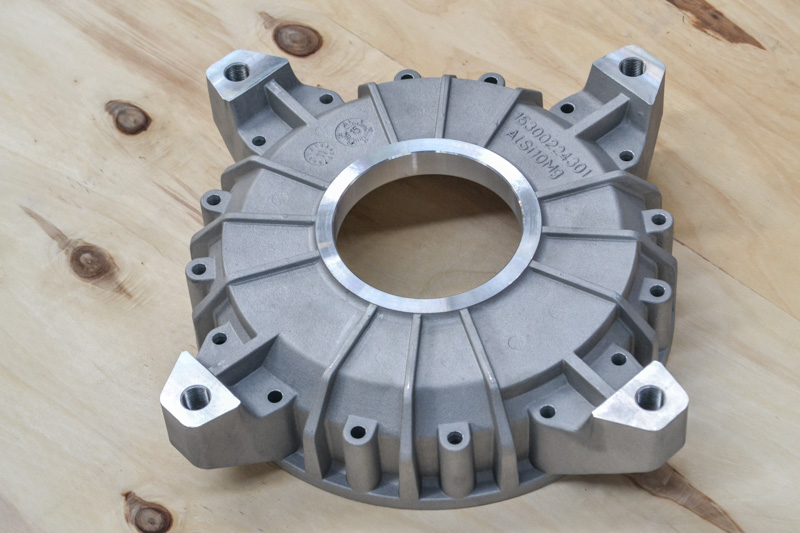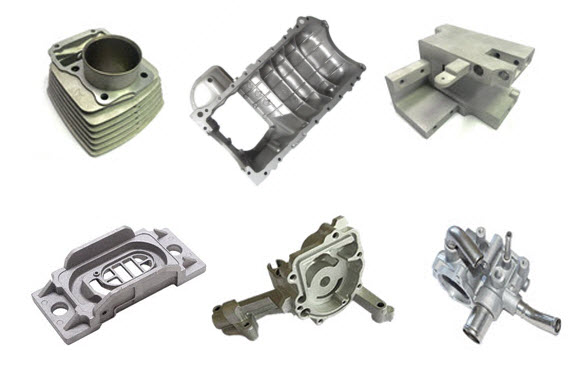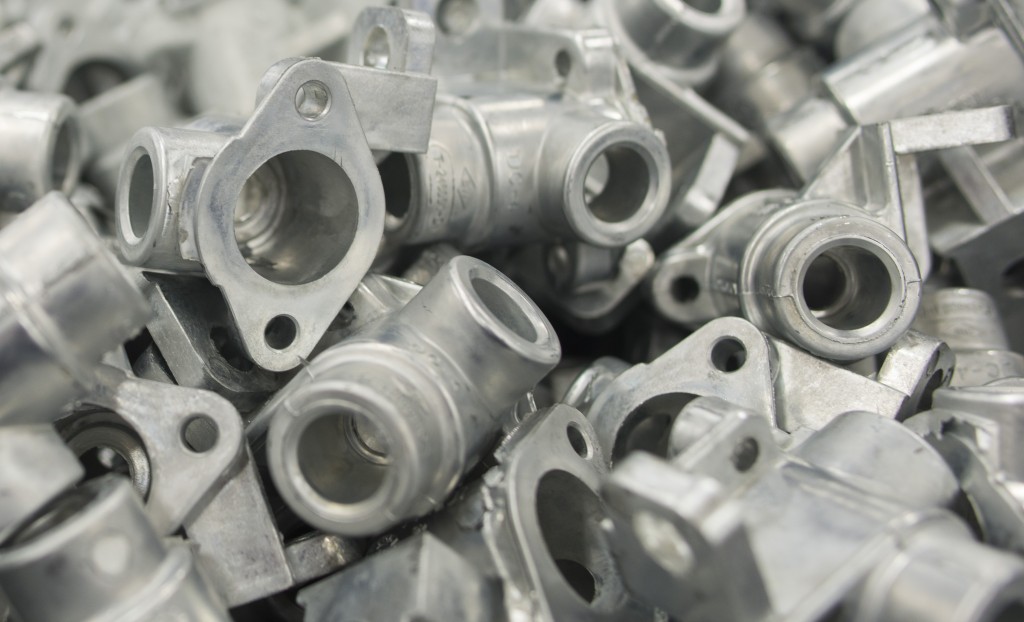How Aluminum Foundry methods create reliable components
Revealing the Conveniences and Practical Utilizes of Aluminum Castings in Today's Market
Light weight aluminum castings have ended up being significantly relevant in numerous markets as a result of their special attributes. Their lightweight nature and resistance to deterioration make them ideal for requiring applications. Additionally, the superior strength-to-weight proportion provides significant advantages in design and production. As markets remain to explore their possibility, the full extent of aluminum castings' benefits and applications stays to be fully uncovered. What lies in advance for this versatile material?
The Lightweight Benefit of Light Weight Aluminum Castings
Lots of materials are made use of in production, aluminum castings stand out mainly due to their light-weight buildings. This characteristic makes light weight aluminum spreadings an attractive option for different industries, especially in aerospace and vehicle applications, where weight reduction is necessary for boosting gas efficiency and performance. The light-weight nature of aluminum allows manufacturers to create components that are simpler to set up and handle, inevitably minimizing labor expenses.
The capability to generate intricate forms without significant weight charges makes it possible for developers to innovate while keeping architectural honesty. Light weight aluminum castings can efficiently change much heavier products, bring about substantial cost savings in shipping and operational expenses. Their light-weight advantage also adds to improved product long life, as lighter components often bring about decreased damage on equipment. Generally, the light-weight residential properties of aluminum spreadings supply makers with an one-upmanship, fostering developments in product design and performance across numerous markets.

Extraordinary Corrosion Resistance
Aluminum spreadings possess an all-natural resistance to oxidation, which significantly enhances their longevity in numerous settings. This intrinsic home not just contributes to their durability yet also lines up with the lightweight advantage that light weight aluminum supplies. Consequently, aluminum castings are significantly acknowledged for their extraordinary corrosion resistance in numerous applications.

Normally Immune to Oxidation
One of the standout characteristics of aluminum spreadings is their exceptional corrosion resistance, which comes from an all-natural oxidation procedure. When subjected to air, light weight aluminum responds to create a thin, protective layer of aluminum oxide. This layer functions as a barrier versus additional oxidation and secures the underlying metal from destructive elements such as wetness and salts. Unlike other metals, this oxide layer is self-repairing; if damaged, it swiftly reforms when revealed to air. This distinct residential property enhances the long life of aluminum castings in different settings, making them perfect for applications in sectors such as aerospace, automotive, and marine. Subsequently, the all-natural resistance to oxidation greatly minimizes maintenance costs and increases the integrity of aluminum castings popular conditions.
Light-weight Sturdiness Advantage
The light-weight nature of aluminum castings contributes significantly to their longevity, making them a useful selection in various markets. This phenomenal resilience is mainly credited to aluminum's natural resistance to rust, which is enhanced further with anodizing and other surface therapies. Unlike several metals, light weight aluminum does not corrosion; rather, it creates a protective oxide layer that shields it from environmental damages. This building is especially helpful in markets such as automotive and aerospace, where weight reduction is essential without endangering toughness. Additionally, the longevity of light weight aluminum castings decreases maintenance prices and substitutes, providing economic advantages in time. Their lightweight durability and corrosion resistance placement aluminum castings as a remarkable material for contemporary production applications.

Superior Strength-to-Weight Ratio
An exceptional feature of aluminum castings is their premium strength-to-weight ratio, that makes them extremely desirable in various applications. This innate residential or commercial property permits aluminum spreadings to withstand considerable stress while continuing to be light-weight, an essential consider markets such as aerospace, vehicle, and production. Engineers frequently choose aluminum spreadings for components that need both durability and minimized weight, enhancing gas performance and efficiency.
The high strength-to-weight proportion likewise helps with the style of intricate shapes and frameworks, making aluminum castings flexible for facility applications. In addition, the capacity to preserve architectural honesty under challenging conditions warranties long life and dependability in products, from aircraft frames to auto components. This benefit contributes to the growing fad of making use of light weight aluminum castings in innovative styles, eventually leading to improved performance and efficiency throughout varied fields. The premium strength-to-weight ratio of light weight aluminum spreadings places them as an essential material in modern-day design and production.
Cost-Effectiveness in Production
Cost-effectiveness in aluminum casting manufacturing is mainly accomplished with decreased material waste and effective production procedures. By enhancing styles and making use of advanced strategies, producers can decrease excess material usage while preserving high quality requirements. This method not only decreases manufacturing expenses but likewise contributes to much more sustainable practices within the sector.
Minimized Product Waste
Lowering product waste in aluminum casting processes substantially enhances manufacturing efficiency. By enhancing the layout and manufacturing techniques, companies can lessen excess scrap and enhance resource usage. This decrease in waste not only decreases product prices however likewise adds to an extra lasting production design. The ability to recycle light weight aluminum additional assistances cost-effectiveness, permitting makers to redeem and recycle materials without compromising top quality. As the sector progressively concentrates on sustainability, minimized material waste straightens with environmental goals while concurrently increasing success. Inevitably, reliable use resources reinforces the competitive setting of services on the market, making light weight aluminum spreadings a positive option in different applications. The strategic technique to decreasing waste reflects a commitment to both environmental and financial responsibility.
Reliable Manufacturing Processes
While typical production processes can incur considerable costs, aluminum casting offers a much more reliable choice that improves total production earnings. This approach reduces material waste and enables accurate control over the manufacturing procedure, bring about decreased labor and operational prices. The capacity to create complicated forms with fewer actions additionally streamlines production, adding to shorter preparations. In addition, light weight aluminum's light-weight nature and exceptional thermal conductivity allow for power cost savings during production and click here for more info in the final application. By utilizing modern-day casting modern technologies, makers can attain higher throughput without sacrificing quality. Consequently, aluminum casting stands apart as a cost-effective solution, making it an eye-catching option for businesses intending to optimize their manufacturing processes in today's competitive market.
Flexibility Throughout Industries
Light weight aluminum spreadings demonstrate exceptional adaptability across different industries, as they can be customized to satisfy particular demands and applications. In the auto field, aluminum spreadings are made use of in engine blocks, transmission housings, and wheels, supplying lightweight yet resilient services that enhance gas efficiency. The aerospace industry additionally benefits from aluminum spreadings, utilizing them in architectural elements and engine components because of their strength-to-weight proportion.
In the customer products industry, suppliers employ aluminum spreadings for products varying from kitchenware to furnishings, giving both visual charm and functionality. The electronics market uses aluminum castings for housings and warmth sinks, guaranteeing reliable thermal administration. Furthermore, the construction field leverages light weight aluminum spreadings for building aspects and architectural elements, enhancing durability and design versatility. This wide applicability highlights aluminum castings as an important source, fulfilling the diverse requirements of numerous markets while preserving high performance and reliability.
Sustainability and Ecological Impact
As industries significantly prioritize sustainable practices, light weight aluminum spreadings become a green option due to their recyclability and low ecological impact. Light weight aluminum is among one of the most recycled materials worldwide, with the capacity to be repurposed multiple times without degradation of top quality. This characteristic substantially reduces the demand for resources and power consumption connected with primary aluminum manufacturing, which is energy-intensive.
In addition, aluminum castings add to lightweight styles, leading to sustain effectiveness in transport applications such as aerospace and vehicle industries. Their resilience and resistance to corrosion prolong item life expectancies, better reducing waste and source use gradually. Lots of producers are adopting responsible sourcing and environmentally pleasant manufacturing approaches, boosting the sustainability of aluminum spreading processes. Generally, light weight aluminum castings stand for a practical solution for organizations aiming to decrease their ecological impact while accomplishing performance and performance.
Innovations in Aluminum Casting Technologies
Recent innovations in light weight aluminum casting innovations have considerably improved the effectiveness and high quality of production procedures. Technologies such as 3D printing and advanced mold-making methods have actually made it possible for producers to develop elaborate designs with decreased product waste. This shift not just enhances the accuracy of actors elements but additionally shortens lead times, permitting quick prototyping and faster market entry.
In addition, the unification of advanced computer system simulations aids in forecasting potential problems throughout casting, causing higher-quality outputs (Aluminum Castings). The usage of lightweight alloys has actually additionally added to the development of more powerful, more durable products, providing to industries varying from automobile to aerospace
Additionally, automated spreading procedures have arised, reducing human mistake and boosting production speed. Collectively, these innovations are transforming the aluminum spreading landscape, driving greater competition and sustainability in production. As sectors proceed to evolve, these modern technologies will play a crucial function in conference future needs for effectiveness and high quality.
Often Asked Inquiries
Exactly How Do Aluminum Castings Contrast to Various Other Metals in Terms of Thermal Conductivity?
Light weight aluminum castings display premium thermal conductivity compared anonymous to numerous metals, such as steel and iron - Aluminum Foundry. Their light-weight nature and reliable warmth circulation make them ideal for applications requiring effective thermal monitoring in various industries
What Are the Common Problems Found in Aluminum Castings?
Common problems in light weight aluminum spreadings include porosity, shrinking, additions, and surface abnormalities. These problems commonly develop from find here inappropriate air conditioning prices, poor mold and mildew design, or contaminations, affecting the general quality and performance of the end product.
Can Aluminum Castings Be Recycled, and How?
Light weight aluminum spreadings can be reused successfully. The process involves accumulating, melting, and reforming the aluminum, which lessens waste and saves sources. This reusing adds to sustainability while maintaining the material's buildings for future usage.
What Are the Common Lead Times for Light Weight Aluminum Casting Production?
Commonly, preparations for light weight aluminum spreading production range from two to 6 weeks, depending upon elements such as intricacy, tooling demands, and production quantity. Effectiveness can enhance with well-known distributor relationships and optimized manufacturing procedures.
Just how Does the Surface Area Finish Affect Light Weight Aluminum Spreading Performance?
The surface area finish noticeably affects light weight aluminum casting efficiency by affecting corrosion resistance, visual quality, and rubbing attributes. A smoother coating enhances toughness and capability, while a rougher texture can boost adhesion for succeeding layers or treatments.
Several materials are utilized in production, aluminum spreadings stand out mostly due to their light-weight homes. When exposed to air, aluminum reacts to create a slim, safety layer of aluminum oxide. Cost-effectiveness in light weight aluminum casting production is largely achieved through decreased product waste and effective production processes. Reducing product waste in light weight aluminum casting procedures significantly improves manufacturing performance. Eventually, reliable use of raw materials reinforces the competitive setting of companies in the market, making light weight aluminum spreadings a favorable alternative in numerous applications.